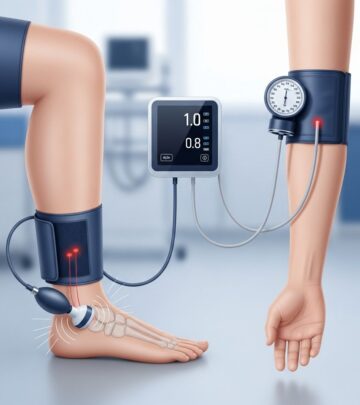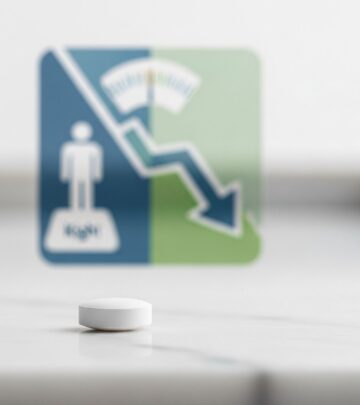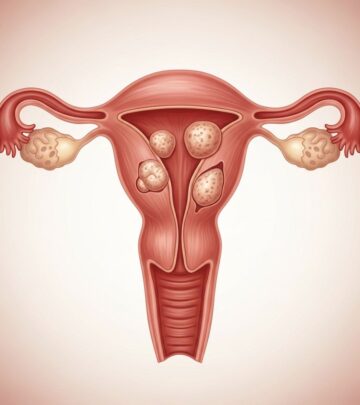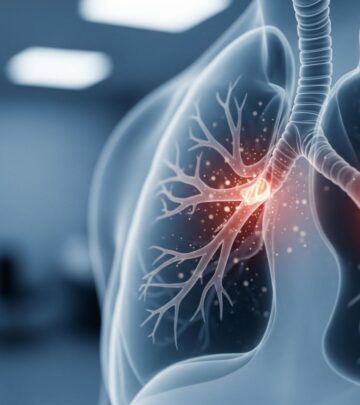Agoraphobia: Symptoms, Causes, Risks, and Complications
Explore the symptoms, causes, risk factors, and life impact of agoraphobia in this comprehensive guide designed for understanding and awareness.

Agoraphobia: Understanding Symptoms, Causes, Risk Factors, and Complications
Agoraphobia is a complex anxiety disorder characterized by an intense fear of situations or places where escape might be difficult, or where help may not be available if things go wrong. This fear frequently leads to avoidance of such situations, severely restricting the affected person’s life and potentially resulting in profound distress or disability.
What Is Agoraphobia?
Agoraphobia involves fearing and avoiding places or settings that can cause feelings of panic, helplessness, or embarrassment. These settings often include public spaces, crowds, or environments perceived as impossible to leave if anxiety arises. The avoidance can become so severe that some individuals become housebound for years.
Agoraphobia and Its Core Features
- Fear of being unable to escape crowded or public places
- Avoidance of specific locations, activities, or situations
- Anxiety in response to being alone outside the home
- Need for a trusted companion when venturing outside
- Persistent distress affecting normal activities
Symptoms of Agoraphobia
Agoraphobia manifests through both psychological and physical symptoms. The pattern and severity may vary, but the central theme is an overwhelming fear of environments or situations where escape could be difficult, triggering or exacerbating anxiety.
Common Fears in Agoraphobia
- Leaving home alone
- Crowds or waiting in line
- Enclosed spaces such as movie theaters, elevators, or small stores
- Open spaces, including parking lots, bridges, or shopping malls
- Using public transportation (buses, subways, trains, or planes)
These situations typically cause anxiety because the person fears not being able to escape or find help if they begin to feel panicked, faint, or experience other distressing symptoms.
Additional Diagnostic Criteria
- The fear or anxiety is significantly out of proportion to the actual danger posed by the situation.
- You may avoid the situation entirely, require a companion, or endure it with notable distress.
- The anxiety or avoidance persists for six months or longer.
- Daily life—social, work, or other important activities—is impaired due to this fear.
Panic Disorder and Agoraphobia
A significant number of people with agoraphobia also experience panic disorder, another form of anxiety disorder. Panic disorder is defined by recurrent and unexpected panic attacks—sudden episodes of intense fear that peak within minutes and cause various physical symptoms.
Symptoms of a Panic Attack
- Rapid heart rate
- Difficulty breathing or sensations of choking
- Chest pain or tightness
- Lightheadedness or dizziness
- Numbness, tingling, or tremors
- Excessive sweating
- Sudden-flushing or chills
- Stomach upset or diarrhea
- Sensation of losing control
- Fear of dying
The recurrent experience or fear of such panic attacks often triggers further avoidance, worsening the cycle of agoraphobia.
Table: Agoraphobia vs. Panic Disorder
| Feature | Agoraphobia | Panic Disorder |
|---|---|---|
| Main concern | Fear of being trapped with no escape in specific situations | Sudden, unexpected episodes of intense fear |
| Key symptom | Avoidance of public or difficult-to-escape places | Panic attacks with physical symptoms |
| Relationship | Frequently develops after panic attacks | Panic attacks occur spontaneously or in specific situations |
| Typical response | Avoidance, reliance on safety behaviors or companions | Fear of losing control or impending doom |
When to Seek Medical Attention
Agoraphobia can drastically restrict your life—limiting social engagement, work, personal development, and even daily tasks like shopping or running errands. If you recognize these symptoms or experience panic attacks, it is vital to reach out to a health care provider or mental health professional.
Causes of Agoraphobia
Multiple factors contribute to the development of agoraphobia:
- Biological factors: Medical conditions or inherited traits can predispose individuals to anxiety disorders.
- Genetics: Family history of agoraphobia or anxiety disorders increases the risk.
- Personality: People with anxious or nervous temperaments are more vulnerable.
- Stressful life events: Major stressors such as abuse, bereavement, or assault may trigger onset.
- Learning experiences: Observing others or having negative experiences in certain places can reinforce fear.
The symptoms often appear following a particularly stressful event or after experiencing panic attacks, leading to heightened avoidance of triggering scenarios.
Risk Factors Associated with Agoraphobia
Agoraphobia most commonly begins in late adolescence or early adulthood, typically before age 35, though it can present at any age. It is more frequently diagnosed in women than in men.
- Having panic disorder or other phobias
- Reacting to panic attacks with severe avoidance
- Experience of traumatic or stressful life events
- Possessing an anxious or meticulous personality
- Having first-degree relatives with agoraphobia
Further Dissecting the Risk Profile
While risk is higher in those with evident anxiety tendencies or family history, it’s essential to note that anyone can develop agoraphobia under certain conditions.
Complications of Agoraphobia
Agoraphobia carries serious ramifications if not addressed, sometimes resulting in:
- Severe lifestyle restrictions (being unable to leave home)
- Inability to attend work, school, or social functions
- Dependence on others for essentials and personal care
- Profoundly affected relationships with friends and family due to social withdrawal
Associated Mental Health Complications
- Depression: Persistent low mood and hopelessness may emerge from chronic isolation.
- Substance misuse: Increased risk of alcohol or drug misuse as a coping mechanism.
- Suicidal thoughts or behavior: Elevated risk without proper treatment and support.
- Other anxiety or personality disorders: Co-occurrence is common.
Continuing agoraphobia, especially when left untreated, increases the risk of ongoing or additional psychiatric comorbidities.
Frequently Asked Questions (FAQs)
Q: What are the earliest warning signs of agoraphobia?
A: Early signs include increased anxiety or discomfort when leaving home alone, fear of crowded places, and a growing pattern of avoidance that interferes with daily activities.
Q: Can agoraphobia develop without panic attacks?
A: Yes, although many cases are linked to panic disorder, some individuals develop agoraphobia without ever experiencing a panic attack, primarily through a process of learned avoidance.
Q: How long must symptoms persist to diagnose agoraphobia?
A: According to standard criteria, fear, anxiety, or avoidance must persist for six months or more and significantly impair social, occupational, or daily functioning.
Q: Who is at greatest risk for developing agoraphobia?
A: Individuals with a family history of anxiety disorders, a nervous temperament, exposure to trauma, or a history of panic attacks are at increased risk.
Q: What happens if agoraphobia is left untreated?
A: Untreated agoraphobia can result in chronic disability, severe isolation, depression, substance abuse, and even suicidal thoughts. It can drastically reduce quality of life and independence.
Tips for Coping with Agoraphobia
Though professional treatment is necessary, the following strategies may support well-being while managing agoraphobia:
- Maintain regular contact with trusted friends or family
- Educate yourself and loved ones about anxiety symptoms
- Develop a gradual plan to face feared situations step by step
- Engage in stress-reducing activities (e.g., deep breathing, meditation)
- Reach out for professional help early
Key Takeaways
- Agoraphobia is a serious anxiety disorder characterized by fear and avoidance of situations where escape might be difficult.
- It commonly co-exists with panic disorder, but can also occur on its own.
- Symptoms lead to profound impact on daily life, relationships, and mental health.
- Early recognition and treatment are essential to prevent severe complications.
Read full bio of Sneha Tete












